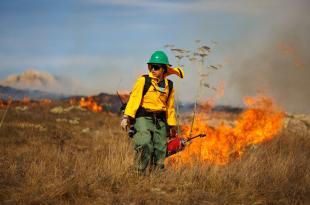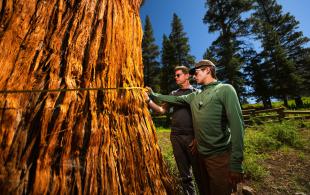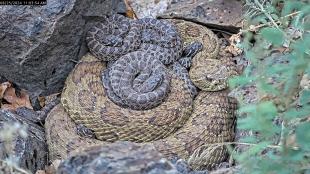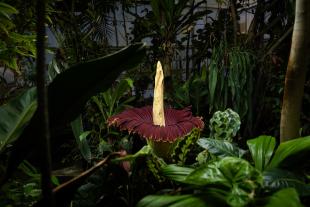Biology Professor Helps Develop Tool for Environmentally Sustainable Ocean Use
A Cal Poly biology professor was part of a team of university researchers who developed a planning tool that could herald a new paradigm of environmentally sustainable ocean industry management.
“We wanted to create a model that could optimize multiple ocean uses rather than increasing the success of one at the expense of another, as traditional models do,” said Crow White, a professor in the university’s College of Science and Mathematics, and a co-author of the study. “At the same time, we wanted to minimize negative impacts on the environment.”
The economic and environmental implications of the model — which balances location, type of ocean use and environmental impact — are immense.
The U.S. — which operated at a $14 billion seafood trade deficit in 2016 — lags far behind other nations in aquaculture development because of complex regulatory policies and social opposition. Moreover, concerns about the environmental impact of offshore aquaculture, as well as potential conflicts with other sectors such as wild-capture fisheries, has limited broad development, even in areas primed for aquacultural success.
In a test case, researchers found that their approach could increase economic returns by millions of dollars and reduce harmful impacts to less than 1 percent compared to conventional marine planning.
White and his colleagues applied their model to the development of offshore aquaculture along the California coast, between Pt. Conception and San Diego. They developed models for three representative types of aquaculture farms with industry potential in Southern California: Mediterranean mussels, striped bass, and sugar kelp.
The models also measured the impact on such factors as halibut fisheries, environmental health, and public views.
“We made sure our model included dimensions that accounted for industry and environmental interests,” said Sarah Lester, an assistant professor of geography at Florida State University, who led the project that also included researchers at UC Santa Barbara. “We were able to find ways to locate aquaculture in a way that minimizes conflict, minimizes environmental impact and yields huge value in terms of seafood produced.”
The group’s strategy was to develop models that can be applied anywhere and can be used for other marine industries, such as the location of offshore wind farms.
“Our hope is that this framework can be used around the world to help develop the seascape in a sustainable way that respects fisheries and other historical uses of the ocean while increasing economic benefits and decreasing the impact on the environment,” White said.
This research was funded by the National Oceanic and Atmospheric Administration’s National Sea Grant College Program, the Waitt Foundation and the Gordon and Betty Moore Foundation.
The team’s findings appear in the journal Nature Communications. To see the study, visit https://www.nature.com/articles/s41467-018-03249-1.




